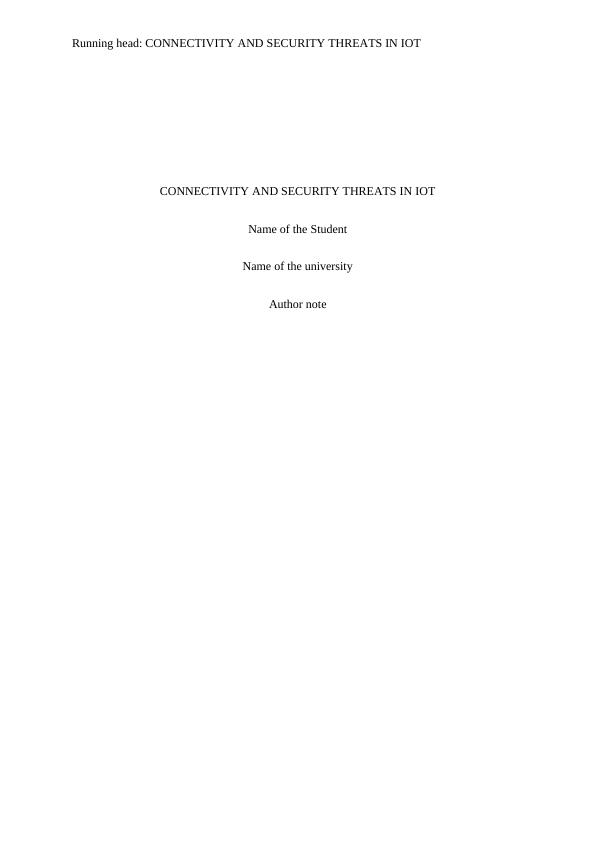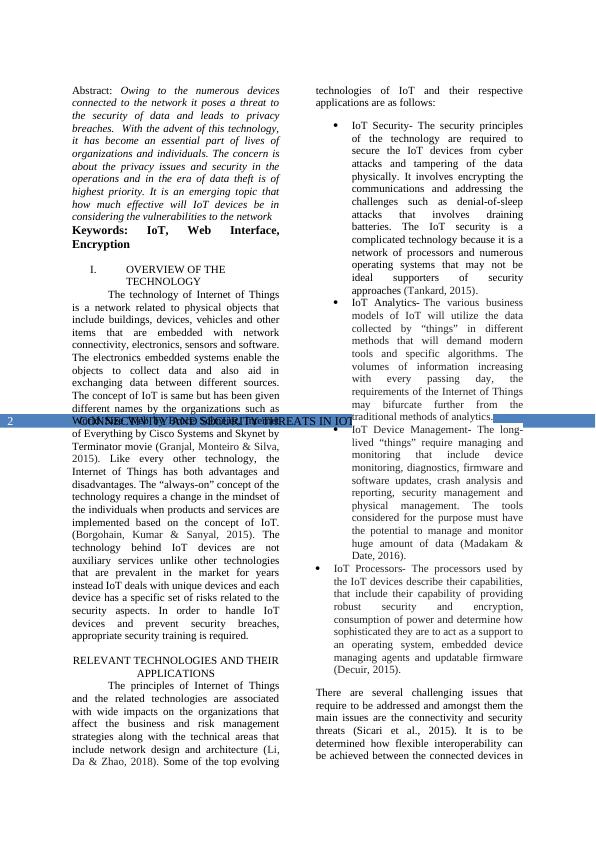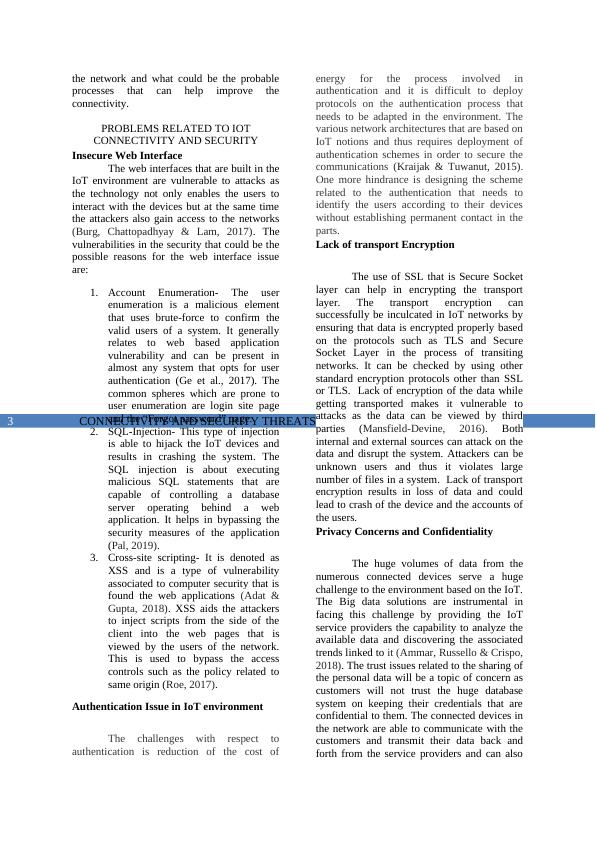Connectivity and Security Threats in IoT
This document is a template for the ITC595 Research Project. It provides the required format for assessment five requirements and serves as a guide for students to modify according to their individual projects.
8 Pages3714 Words309 Views
Added on 2022-11-26
About This Document
This article discusses the connectivity and security threats in the Internet of Things (IoT) environment. It explores the challenges and risks associated with IoT devices and networks, such as insecure web interfaces, authentication issues, lack of transport encryption, privacy concerns, and poor physical security. The article also highlights relevant technologies and their applications in IoT, as well as gaps in the existing literature. Overall, it provides insights into the vulnerabilities of IoT and offers potential solutions to enhance security and protect data.
Connectivity and Security Threats in IoT
This document is a template for the ITC595 Research Project. It provides the required format for assessment five requirements and serves as a guide for students to modify according to their individual projects.
Added on 2022-11-26
ShareRelated Documents
End of preview
Want to access all the pages? Upload your documents or become a member.
IoT Threats to Database Security
|5
|1145
|364
Wireless Communication Protocols and Technologies Used in IoT
|5
|1730
|427
Security Risks and Issues in IoT Technology
|7
|3094
|74
IoT Threats to Database Security
|20
|1383
|296
IoT Security and Privacy Challenges in All Domains
|2
|714
|196
Security Issues In IoT
|12
|4945
|61



